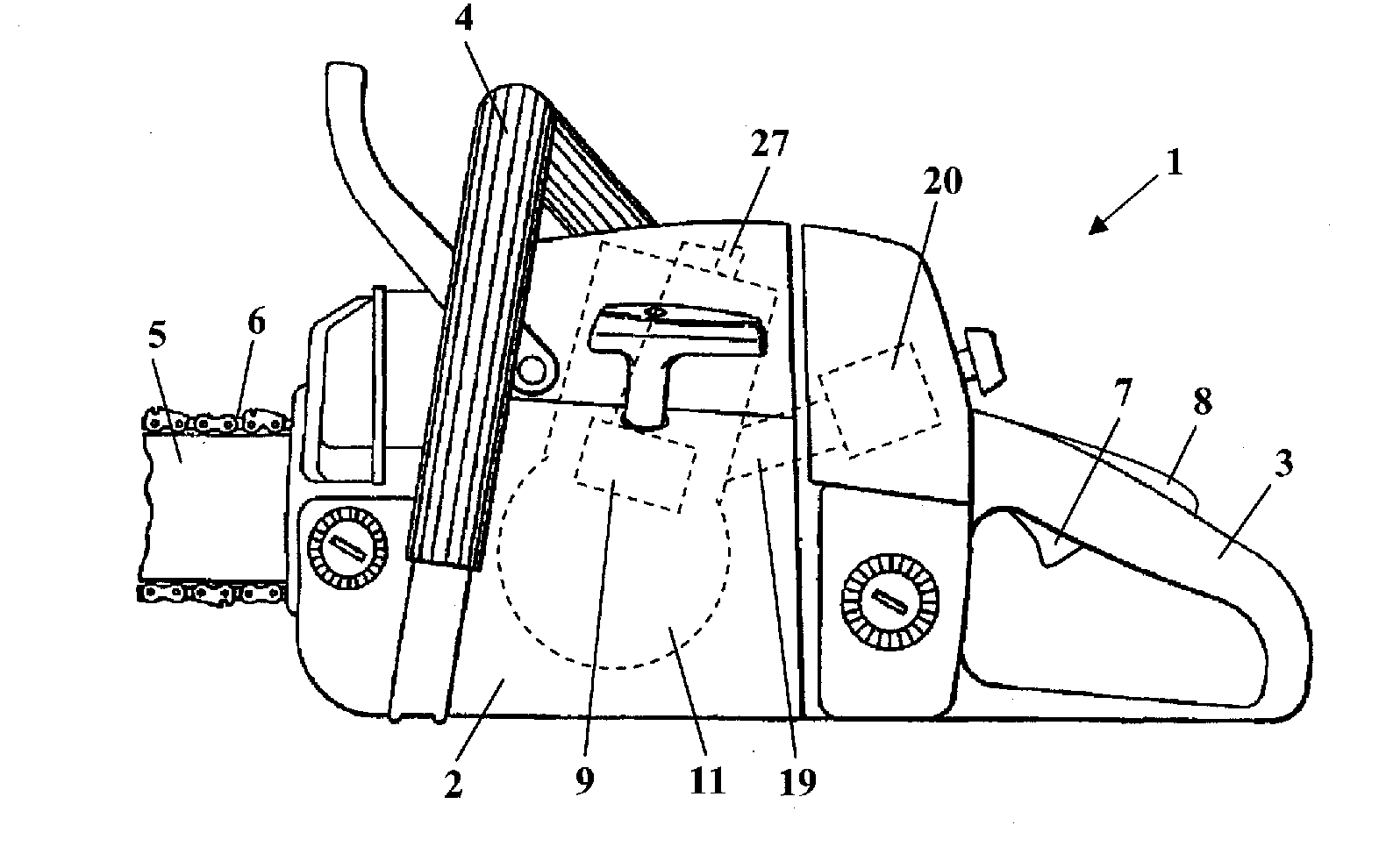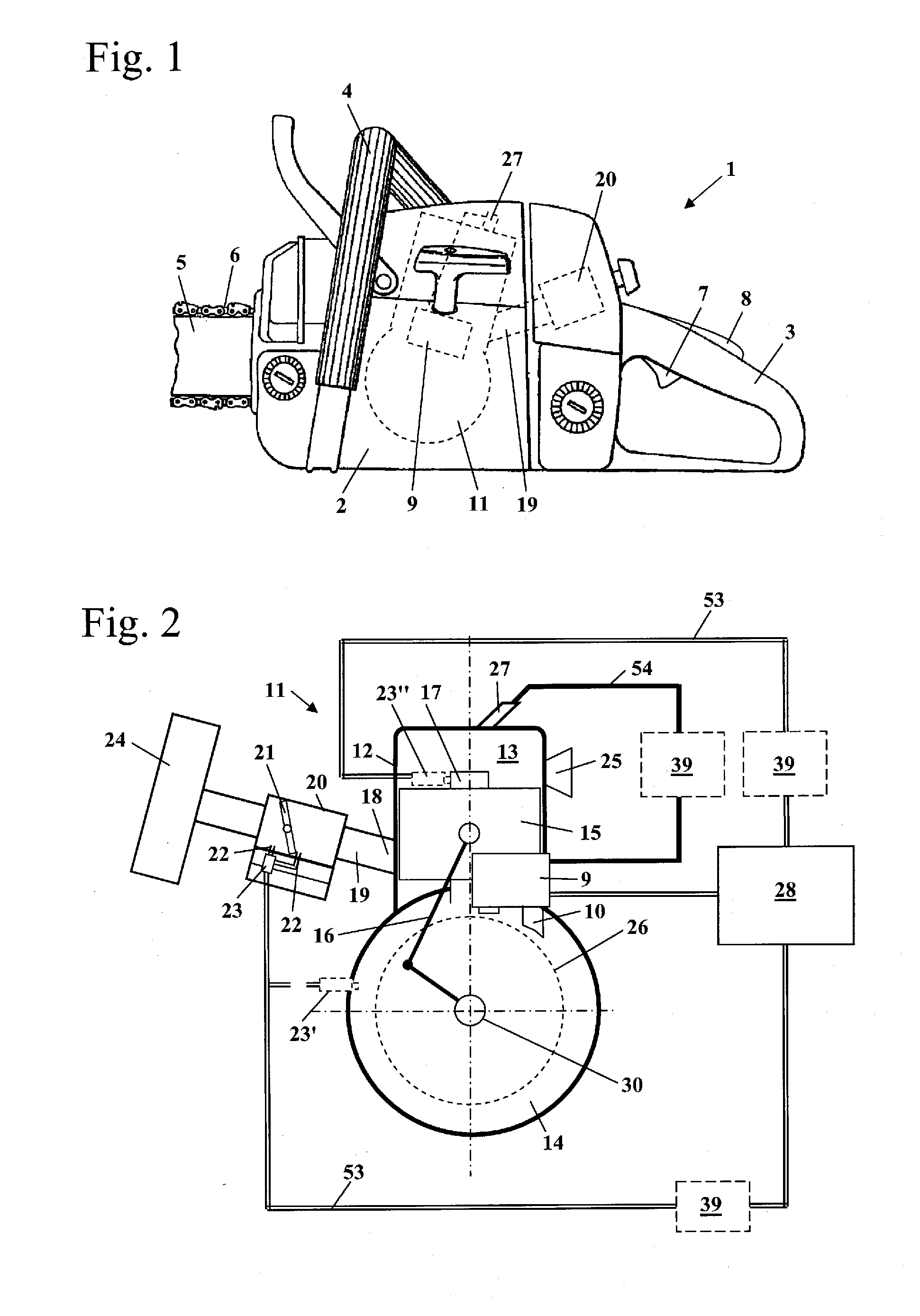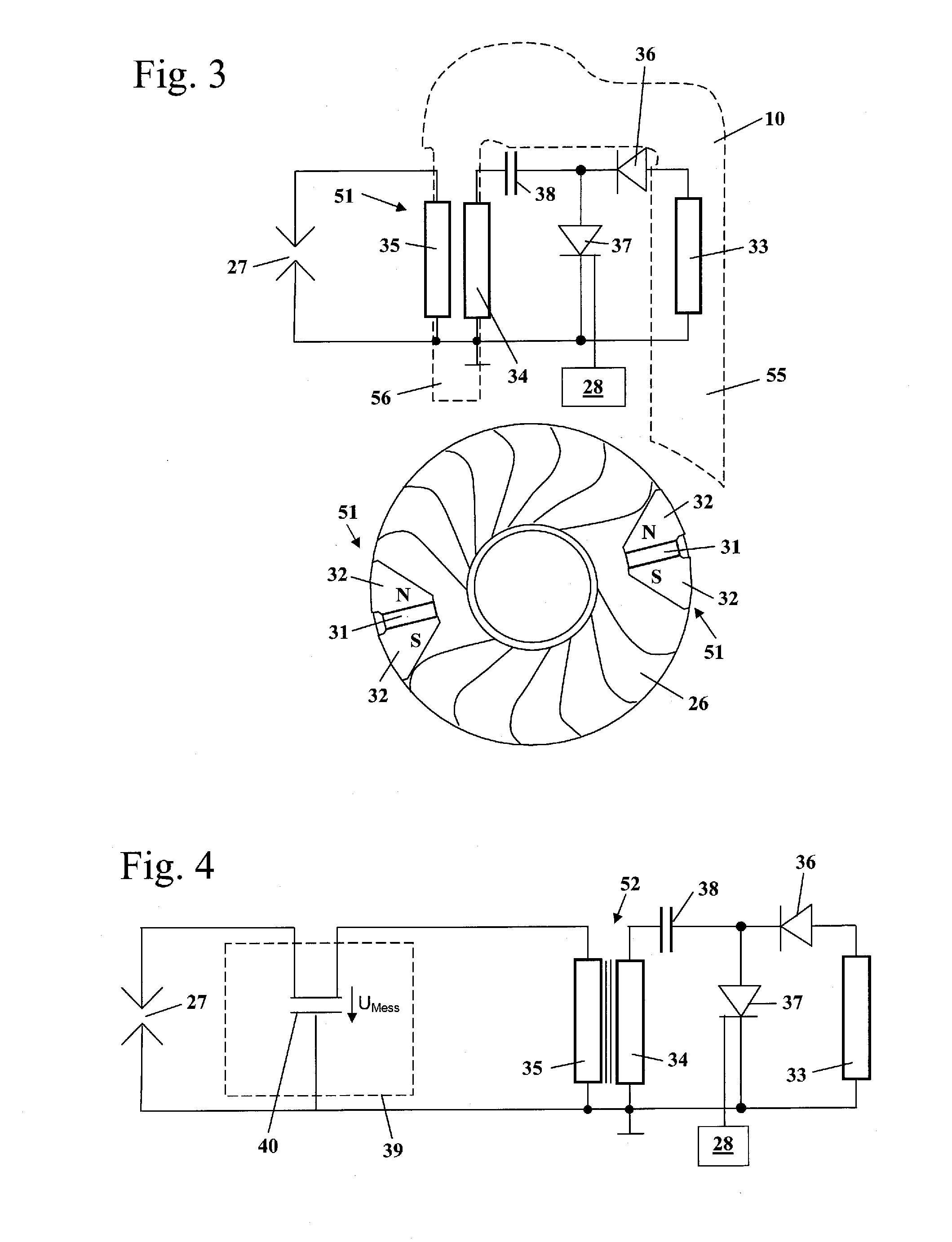Method for Damage Diagnosis in a Handheld Work Apparatus
a handheld work and damage detection technology, applied in the direction of electrical control, process and machine control, instruments, etc., can solve the problem of insufficient short operation period, and achieve the effect of simple damage detection option
- Summary
- Abstract
- Description
- Claims
- Application Information
AI Technical Summary
Benefits of technology
Problems solved by technology
Method used
Image
Examples
Embodiment Construction
[0021]FIG. 1 shows a chain saw 1 as an exemplary embodiment of a handheld work apparatus. The suggested method, however, can also be utilized in other handheld work apparatus driven by a combustion engine, such as cut-off machines, brushcutters or the like. The chain saw 1 has a housing 2 in which a combustion engine 11 is arranged. The combustion engine 11 has an ignition unit which includes an ignition module 9 and a spark plug 27. An intake channel 19 for the supply of fuel and combustion air, in which fuel is drawn in via a carburetor 20, opens at the combustion engine 11.
[0022]A rear handle 3, on which a throttle lever 7 and a throttle lever lock 8 are pivotably mounted, is arranged on the housing 2 of the chain saw 1. A bale handle 4 extends over the housing 2. Projecting forward on the end of the housing opposite the handle 3 is a guide bar 5, on which saw chain 6, which is driven in circulation by the combustion engine 11, is arranged.
[0023]FIG. 2 shows the combustion engine...
PUM
 Login to View More
Login to View More Abstract
Description
Claims
Application Information
 Login to View More
Login to View More - R&D
- Intellectual Property
- Life Sciences
- Materials
- Tech Scout
- Unparalleled Data Quality
- Higher Quality Content
- 60% Fewer Hallucinations
Browse by: Latest US Patents, China's latest patents, Technical Efficacy Thesaurus, Application Domain, Technology Topic, Popular Technical Reports.
© 2025 PatSnap. All rights reserved.Legal|Privacy policy|Modern Slavery Act Transparency Statement|Sitemap|About US| Contact US: help@patsnap.com



